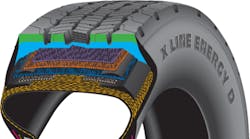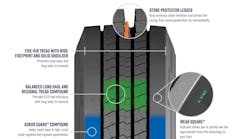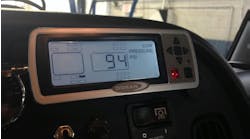NACFE updates low rolling resistance tires Confidence Reports
As part of its ongoing work to update all of its existing Confidence Reports, The North American Council for Freight Efficiency (NACFE) has just completed a revision of its Confidence Reports on low rolling resistance tires. The original reports were published in 2015, but since that time there have been several developments that led NACFE to revise the reports. Rolling resistance accounts for 30% to 33% of a truck’s total fuel consumption and fleets have increased the adoption of low rolling resistance tires — both duals and wide base. Low rolling resistance tires are now on more than 80% of new truck and trailers.
"Low rolling resistance tires can save fleets significant amounts of fuel,” said Bill Walmsley, product category manager of Line Haul, Business to Business at Michelin North America. “Just how much is based on the tire’s rolling resistance coefficient and other factors such as rotational mass. The lower the coefficient, the greater the savings.”
Greenhouse Gas Phase 2 regulations are now in effect and tires are one of the technologies fleets recognized as helping manufacturers achieve goals set forth in the regulation. One consequence of this regulation for the truck buyer may be that manufacturers will encourage buyers to continue to spec low rolling resistance tires even when fuel prices are low and to switch to even lower rolling resistance tires as they become available.
Tire manufacturers continue to work on balancing initial purchase price and tire life. “Even though the upfront costs of low rolling resistance tires may be higher, the cost of the fuel that a tire consumes due to its rolling resistance is five times greater than the initial purchase price of the tire,” according to Mike Roeth, executive director at NACFE.
When fuel prices were higher, there was more interest in wide-base tires, but as dual tires with equivalent low rolling resistance were engineered, the interest in wide-base tires has decreased. However, fleets still are interested in low rolling resistance tires as a way to reduce operating costs and wide-base tires are a solution for many fleets.
The report provides fleets with best practices regarding low rolling resistance tires noting that diligent maintenance is essential to get the best life and performance.
In addition to the confidence matrix, which indicates the study team’s confidence in the investment case for low rolling resistance tires, the report also contains a decision guide and payback calculator.
"Even though the upfront costs of low rolling resistance tires may be higher, the cost of the fuel that a tire consumes due to its rolling resistance is five times greater than the initial purchase price of the tire," added Roeth.



